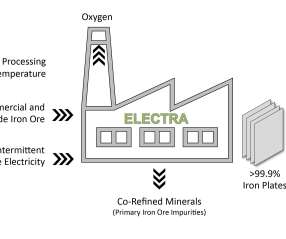Electra raises $85M to advance Low-Temperature Iron process; electrochemical refining at 60?C
Green Car Congress
OCTOBER 7, 2022
By comparison, 69% of steel today is made at approximately 1,600 degrees Celsius (2,912 degrees Fahrenheit) using coal, emitting about two tons of carbon dioxide for every ton of steel produced. Conversion of iron ore into iron accounts for 90% of steelmaking emissions that may be eliminated using Electra’s process.




























Let's personalize your content